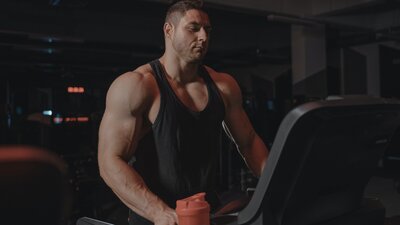Intro to Cardio
Cardiovascular health is the heart of fitness. The health of one’s heart and blood vessels is just as valuable as the muscles and ligaments. Unfortunately, cardiovascular disease is the leading cause of death in our culture (1). Many people today suffer from high blood pressure, high cholesterol, and diabetes. With today’s conveniences, people can easily avoid cardio, hurting their health in the long run.
Cardio can be performed through a variety of ways as long as the heart rate is in an elevated state for a moderate period of time. If the pace is highly-intense (HIIT), it’s recommended to go for a maximum of 15 minutes. If the pace is moderately low-intensity (LIIT), anywhere from 30-60 minutes is a good goal.
Activities like walking, cycling, and climbing stairs can all be supplemented into anybody’s daily routine for greater health benefits.
For already-active people, the big question hangs over many people’s heads; should it be done before or after a workout? Cardio can be incorporated into a routine based on the specific goals of the person.
Weight Loss
For weight loss, cardio works great as a warm-up to lifting weights. This approach puts the body into a hypertrophic state right from the start. The goal is to get the body and mind prepared for the upcoming bout of resistance training. If you are at the gym, a treadmill, bicycle, or stepmill can be of great use. If at home, a walk outside or a jump rope work as well. The ideal pace for pre-workout cardio is a HIIT session. The faster the body moves, the more calories are burned.
That does not mean cardio should take over the majority of the workouts, rather, it should kickstart workouts by raising the heart towards an elevated state.
Weight Gain
A post-workout cardio session can benefit people looking to gain weight. For this demographic, resistance training should be the priority. After a training session, the body needs time to shift back into a resting heart rate. Cardio can be used as a great way to cool down after a workout in the form of light-intensity interval training (LIIT). An alternative to this can be the sauna. Even though the body is at rest, the heat keeps the heart in an elevated state. It can even promote heat-shock proteins and fat loss. On another note, the body will tend to increase body fat during bulking phases. Performing HIIT exercises can be a great way to combat this potential increase in body fat.
Other Gains From Cardio
Cardio can also be done on days away from the weights. This would turn the “off day” into an active recovery day. It’s one thing to have a day off from the weights, but it’s another to be sitting down all day without any activity. This will build up lactic acid in the body, and in effect, make recovering muscles feel more sore (2). Low intensity cardio does not further stress muscles. If anything it can alleviate soreness by stretching the muscles towards a better state for recovery. Whether it be walking, yoga, or jump rope, the inflammation of sore muscles from lactic acid build-up will decrease.
Cardio, no matter how it’s performed, is important for a multitude of areas of health. Not only does it improve physical health, but it also impacts one’s mental and emotional health. One study claimed that within their control group, “many of the respondents had started running to improve their health, and almost all noted mental and emotional benefits including relief of tension, improved self-image, and better mood” (3). The activity worked like a chain reaction between mental, emotional, and physical health.
Walking and yoga are major contributions to mindfulness. These two bouts have shown immense improvements on people with short or long term anxiety and/or depression(4). Both exercises require a certain level of focus, from the way our feet contact the ground, the ease of balancing the entire body, and most importantly the pacing of our breathwork.
Do It!
Cardio is one of the best forms of exercise for our overall health. It can further one’s performance in the gym and bring them closer to their weight loss or endurance goals. Be it before or after a workout session, cardio is necessary no matter what.
References

